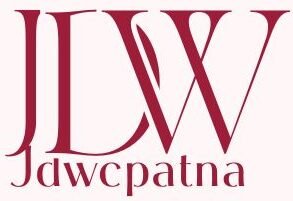A new executive order signed by former President Donald Trump’s administration has created a lot of controversy regarding the effects it might have on critical federal assistance programs. The order freezes funding for some grants and loans, putting services like Social Security, SNAP (Supplemental Nutrition Assistance Program), and Medicare in question. However, a federal judge has put the order on hold, leaving everyone with a lot of questions regarding the future of these programs. Here’s a detailed analysis of the executive order, its objectives, and how it may impact millions of Americans.
Understanding the Executive Order
The Trump administration issued an executive order that temporarily stops the disbursement of funds for several federal financial assistance programs. The administration officials said the move is aimed at reviewing federal spending and ensuring that programs are in line with the administration’s policies.
Some of the key objectives of the order include:
- Reviewing Government Programs: Federal agencies will review whether funds are appropriately spent and ensure they are relevant to the priorities of the government before continuing payment.
- Not an Impoundment: Officials noted that this is a temporary halt rather than impoundment, and the programs could continue with funding after review is done.
- Partial Freeze: Not all federal programs are being halted. There are some that are specifically excluded from the freeze as they are essential.
Programs Affected vs. Programs Exempted
| Programs Affected | Programs Exempted |
|---|---|
| Certain federal grants and loans | Social Security benefits |
| Some state/local government programs | Medicare and Medicaid |
| Programs linked to diversity and climate policies | SNAP (food stamps) |
| Green New Deal-related initiatives | Pell Grants & student loans |
| Some small business and rental assistance programs | Veterans’ benefits |
Impact on Essential Benefits
The primary concern following the executive order was whether it would impact Social Security, Medicare, and SNAP benefits. The good news is that these programs are explicitly protected from the funding freeze.
- Social Security and Medicare: According to the Office of Management and Budget (OMB), “nothing should be construed to affect Medicare or Social Security benefits.” That is to say that the payments are not going to be stopped at all.
- SNAP and Medicaid: As they are mandatory aid programs, food stamps and medical coverage are still not included in the freeze low income households are therefore being protected from its impact.
- The Other Key Programs included Pell Grants, student loans, and small business assistance programs as well.
The ruling offered much needed relief and reassurance to millions of Americans who have been relying on these benefits: the payments are going to come as usual.
The Justification for the Freeze
The Trump administration has defended the executive order as part of a broader effort to review federal spending and cut programs that do not align with its priorities. It has cited three key reasons for this:
- Ensure Government Efficiency: Officials claim reviewing spending will identify wasteful or mismanaged federal programs.
- Policy Alignment: The administration aims to reassess funding for initiatives related to diversity, climate change, and progressive policies.
- Reducing Federal Spending: The freeze is meant to reduce government debt and channel those funds to other priorities.
Legal Challenges and Judge’s Ruling
Within weeks of the freeze order, various nonprofit organizations and political leaders sued the freeze in court.
- U.S. District Judge Loren L. AliKhan issued a temporary injunction blocking the funding pause until at least February 3, 2025. This ruling prevents the Trump administration from implementing the freeze immediately, allowing time for further legal review.
- The ruling has put the executive order on hold, but the legal battle is far from over. The administration may appeal the decision, leading to further uncertainty about the order’s future impact.
Political Responses to the Freeze
Temporary injunction drew both parties in strong reactions:
Opposition to the Freeze
- Senate Minority Leader Chuck Schumer called the order “a backdoor way to cut social programs.”
- House Minority Leader Hakeem Jeffries warns that millions of Americans could face difficulties if the freeze comes into action.
- Texas lawyer Christian D. Menefee said that Trump does not have the legal power to withhold funds once approved by Congress.
Support for the Freeze
- White House Press Secretary Karoline Leavitt justified the freeze, saying that it holds people accountable for federal spending.
- Trump administration officials maintain that key benefits – Social Security and Medicare – will not be impacted.
What’s Next?
The funding freeze remains blocked at least for now, and all essential programs continue to run without interruption. However, several developments could still impact the situation.
What to Watch For
- Further Court Decisions: The injunction runs out on February 3, 2025. The Trump administration may appeal, which could be followed by additional litigation.
- Congressional Response: Members of Congress may introduce legislation to ensure no future executive orders will impact federal assistance programs.
- State & Local Effects: Though major programs like Social Security and Medicare are left untouched, other state and local funding may be delayed or cut.
Final Thoughts
The court ruling neutralized the immediate threat to Social Security, Medicare, and SNAP, but the debate over federal spending continues. The Trump administration’s move has highlighted the ideological divide over government assistance programs. As legal battles play out and policymakers debate future funding, it remains essential for Americans to stay informed and engaged in the discussion.
For now, Social Security, Medicare, and SNAP benefits remain safe, but the future of federal assistance programs is still uncertain. Americans who depend on these programs should continue monitoring updates from reliable sources and prepare for any potential changes in the months ahead.


